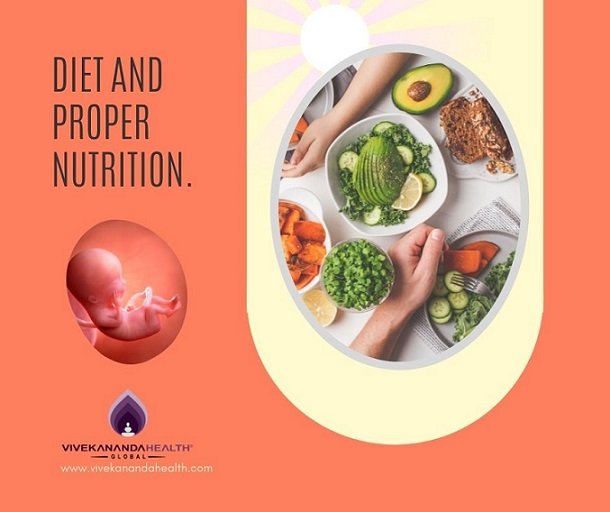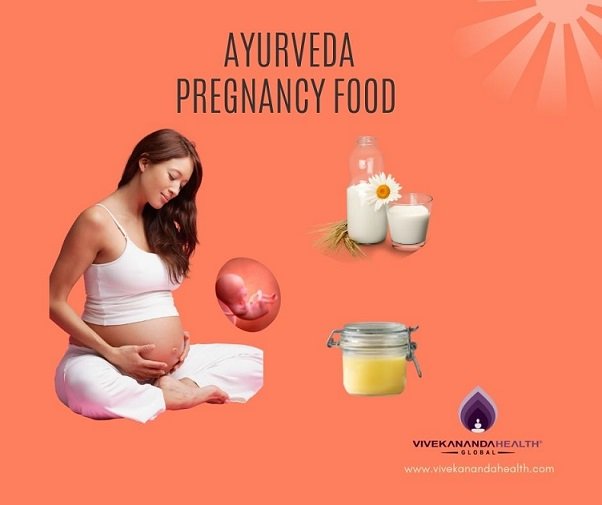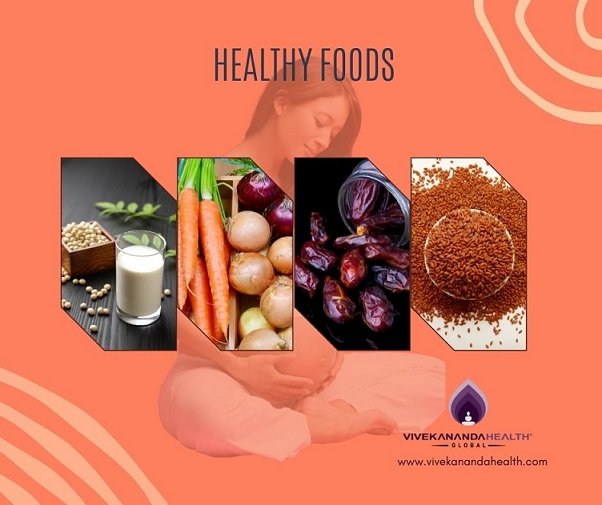Diet And Lifestyle Modification during Pregnancy
The metabolic system or the way our body transforms food into energy undergoes incredible changes during pregnancy. The growing baby's main source of nutrition is the glucose from the mothers blood.

Pregnancy physiology
During pregnancy carbohydrate and fat metabolism undergoes changes to accommodate the requirements of both the mother as well as the growing foetus. Carbohydrates, fat and proteins are absorbed in the intestines and supplied to the placenta. There has to be a constant supply of nutritional glucose throughout the day. To achieve this there is insulin resistance caused by pregnancy hormones.
In the first and second trimester, after every meal there is hyperglycemia and this excess glucose together with the insulin in the blood leads to protein and fat storage in the body. In the 3rd trimester when the energy requirements are increased exponentially because of the growing foetus, the stored fat gets used up. At about 22 weeks the Human placental Lactogen(hpl) reaches peak which stimulates lipolysis in the fat tissues and there is free fatty acid in the circulation used for mothers own energy requirement. Now the glucose absorbed from the food which she eats gets diverted to the foetus.
Importance of Diet and proper nutrition

Pregnancy is a state of accelerated energy requirement. Hence the body will not tolerate fasting or calorie restriction. If the body is starved due to less food, excessive vomiting or any other conditions, it can easily cause free fatty acids to be released in the body which again can cause ketosis, ketonuria or acidosis. All of these conditions will affect both the mother as well as the foetus. The body has less tolerance towards starvation.
Diet modification in pregnancy
Since it is evident that the entire metabolic system is changing during pregnancy it is important that the diet and lifestyle should also undergo modifications to suit the need. The food should not only be sufficient for the mothers own body requirements, that is to maintain a good basal metabolic rate but also provide a constant supply of energy to the growing foetus. It is important to note that although the mother might be resting at various points in time while the baby's energy requirements are constantly increasing because of its growing status. Hence mindful dietary changes to accommodate maximum nutrient supply to the body is advised.
Ayurvedic Perspective of diet in pregnancy
According to acharya charaka the pregnancy diet should fulfil three aspects
- Nourish the mothers body
- Help in breast milk production
- Nourish the development of foetus
स्त्रि या ह्यापन्नगर्भयर्भ ास्त्रि धा रसः प्रति पध्यते
स्वशरीरपष्ुटये,स्तन्याय,गर्भवर्भ द्ृधयेच । चरक शारीर
Ayurveda has given emphasis on preparing the body for pregnancy by detoxification (panchakarma) as a preconception procedure as a part of garbha samskara . It was thoughtfully included so that digestive and metabolic faculties are in their best form to handle the physiological changes in pregnancy. The nutrition that is provided in the form of good food can reach the foetus only if the mother's organs are able to process it efficiently.
Milk and ghee are considered beneficial throughout the pregnancy.

Milk is the best source of naturally available protein, calcium, vitamin A and vitamin B-complex. It takes care of both mother's and the baby's needs. According to Ayurveda, milk nourishes all the body tissues( 7 dhatus ) and finally increases the Ojas or the vital life energy. It naturally facilitates the proper physical and intellectual development of the baby. Complaints of back aches and joint pains post pregnancy can be easily avoided by adequate intake of milk.
Ghee is considered as the best of all the oily lubricating nutrient food.
शस्तं धीस्मतिृतिमेधाग्नि बलाय:ुशक्रुचक्षुषाम ्।
Ghee increases memory, intellect, digestive capacity, strength, longevity, nourishes the eyes and other sense organs. Regular intake of ghee benefits the expectant mother and these will be carried forward to the foetus.
Monthly Food Regimen
In the First month, when the pregnancy is first suspected, Acharya Charaka says small quantities of milk should be sipped throughout the day. Eat easily digestible food. At this point, 5mg of folic acid is recommended to avoid the development of neural defects in the baby.
In the first trimester sweet, cooling and liquid forms of food are helpful. Singhada or the water chestnut is considered as Garbha Sthapana food which has the ability to stabilise the foetus in the womb.
- Singhada powder 1 tsp with lukewarm milk and ghee is useful.
- 3-4 cups of whole milk everyday.
- Daily use of cow's ghee with milk is useful.
- In the third month rice with milk is advised to be taken frequently and in more quantity in the first course of meals like early breakfast and lunch.
- Practice of yoga and pranayama in these earlier stages with the help of proper guidance will ease the discomforts of the first trimester to a large extent.
Second trimester is more about development of vital organs such as heart and lungs, sense organs including the eyes and ears. Keeping this in mind, food intake should be rich with a good amount of vitamins, proteins and good quality fat. Also since the symptoms of nausea, frequent micturition and other disturbances have subsided during this period the pregnant woman should focus on having food with best nutritional values. Body stores the fat during this period to compensate for the excessive requirements of mother and baby in the final trimester.
- Fourth month - Heart of the foetus starts working in this month. More pure kapha and rakta is essential for the foetus now. Curds with rice and ghee are to be consumed more in this month. Quantity of intake should be increased. Pregnancyis a state of 2 hearts or Douhruda. In Ayurveda, it is said that the baby's wishes are manifested through the mother as longings or cravings.द्वि हृदया च नरी दौहृदि नी आचक्षति
- Fifth month - Manas or mind becomes promptly active. All categories of food which come under “Hridya” as per ayurveda are provided to develop mental faculties in proper manner. Rice with cow's milk is advised. Milk nourishes both body and mind. According to garbhopanishad, the vertebral column develops in this month.पञ्चमेमनः प्रति बद्ुधतरं भवति ।
- Sixth month - Smriti (memory) Buddhi (power of perception) starts functioning. Hence cow's ghee is recommended in this month. One should consume a judicious amount of ghee with rice. A large part of the human brain is made up of omega 3 fatty acids. Ghee is an excellent source of this good fat.षष्टेबद्ुधि ः।
The third trimester is all about further growth and maturity of the organs. It is important to keep the baby in the womb as far as possible so that the baby will enter the world with well developed organs and body parts.
- Seventh month - The foetus is fully developed and now focus is on the formation of Rakta (blood) and Asthi dhatu (bone). Diet should include adequate amounts of Vitamin B12, Calcium, Natural sources of iron and also rich in fibre content.सप्तमेसर्वां गवि भागः प्रव्यक्तरः ।
- Eighth month - Ojas (vital energy) flows alternately between mother and child. Because of this transfer of energy pregnant women are energetic at times and tired and drained sometimes. This can also be correlated to the surge in hormones to cause hypo/hyperglycemia in the blood.
Food should be taken in proper intervals so that there is no state of hypoglycemia. Frequent meals are highly recommended to meet the growing demands of the baby.अष्टमेअस्थि री भवति ओजः ।
- Ninth month - Ideal time for delivery. Ayurveda prescribes the use of Basti (medicated enema) in the last trimester to keep the vata in control. This not only keeps the false labour pain from happening, it also soothes the Autonomic nervous system in the region. Pichu dharana (application of swabs dipped in medicated oil) prepares for easy labour.नवममं ासंउपादय प्रसवकालं ।
Average diet for pregnancy
| CEREALS | Rice, Jowar, Wheat, Barley, Ragi, Maize, Bajra |
| PULSES | Green gram, Black gram, Bengal gram, Double beans,Soya, Red gram, French beans |
| VEGETABLES | Bottle gourd, Cucumber, Tinda, Lady's finger, Parwal, Ridge gourd, Red pumpkin, Ash gourd, Tomato |
| FRUITS | Banana, Apple, Mango, Orange, Pomegranate, Pear, Grapes |
| MILK PRODUCTS | Whole milk, Ghee, Curd, Paneer, Buttermilk, Cheese, Shrikhand |
| NON-VEG PRODUCTS | Goat meat, Chicken, Sardine fish, Crabs, Eggs, Cod-liver oil, Salmon |
| ROOTS AND TUBERS | Carrots, Radish, Sweet potato, Yam, Turmeric,Beetroots,Tapioca |
| GREEN LEAFY VEGETABLES | Spinach, Lettuce, Curry leaves, Coriander leaves, Mint,Cabbage, Fenugreek, Drumstick leaves, Amaranth leaves |
With the development of eyes and ears, the baby in the womb is able to sense sound and light around the mother. It is essential at this point that the mother should be well exposed to Healing music and Meditation.
Abyanga (oil massage)

Gentle oil massage with ayurvedic oils will help the woman to relax as well as take care of the dry itchy skin due to developing stretch marks. Oil massage keeps the skin supple and lubricated throughout the pregnancy.
Other Healthy Foods

| Haliva/ Garden cress seeds | In the last months of pregnancy and lactating mothers. Will help avoid anaemia and debility |
| Eggs, crabs, corn, soy milk | In the second trimester help build strong bones of foetus |
| Spinach, Onion, Carrots | Helps provide essential vitamins and calcium. |
| Apricots | Helps ease constipation, prevents infection and also acts as nervine tonic |
| Dates, fig and black raisins (munakka) | Soaked overnight is an excellent natural source of iron, prevents acidity and eases constipation |
| Black currants | Juice of soaked fruit helps in scanty urination, hyperacidity and digestion. |
| Fresh salads | Cucumber, Cabbage, Lettuce, Asparagus all in limited quantity |
| Spices | Cardamom, Nutmeg, Clove, Coriander, Dry Ginger, Black pepper, Rock salt, Jaggery |
Antenatal Yoga
Structures which participate in labour are generally under-utilised in our daily lives. Strengthening of all the muscles through specific exercises will ensure smooth delivery. Exercises help to bring the baby into a natural birth position and also help in easy delivery. Pranayam and deep breathing practised regularly helps meet the increased oxygen demand during pregnancy.
Article By :
Dr. Suchetha Hedge





